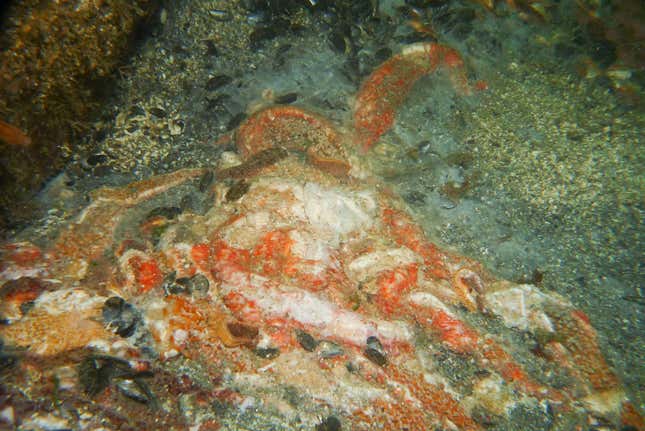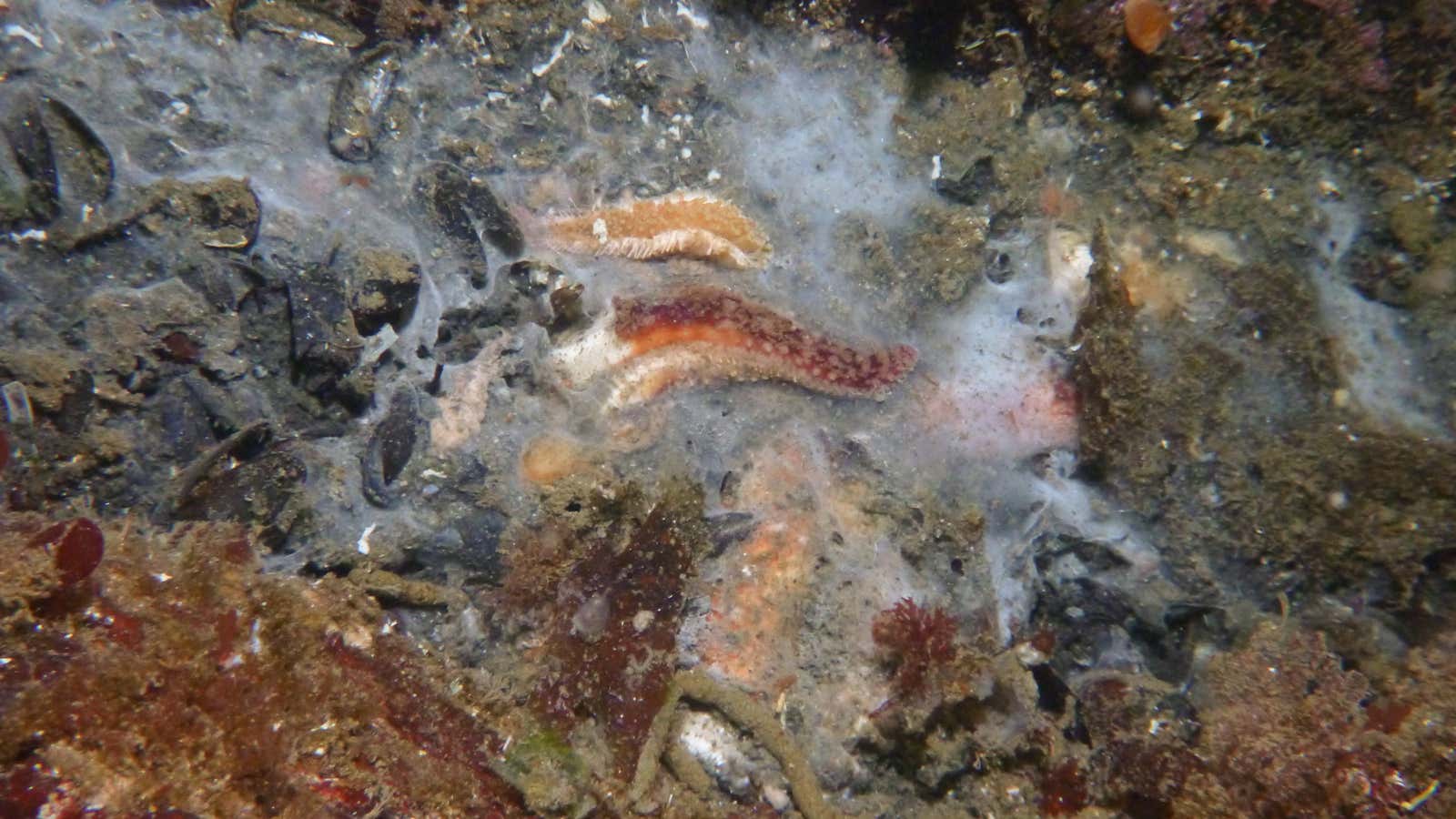Sections of North America’s Pacific coast have turned into a horror show of sludge-ridden starfish corpses, and scientists can’t seem to pinpoint the cause. In a gory process tailor-made for a low-budget science fiction thriller, the stricken starfish first develop white lesions that become infected, then their arms fall off. Finally comes necrosis, disintegration, and an ugly death.
“It’s like a zombie wasteland,” biologist Emily Tucker, who works for the University of California, Santa Cruz, told Nature. ”You’ll see detached arms crawling away from their body.”
“My dive buddy and I were astonished to see the devastation going on,” Neil McDaniel, a marine naturalist and deep sea diver in British Columbia, told the Washington Post. The starfish’s “body walls were rupturing, the internal organs were falling out through ulcerations. It looked like the walking wounded.” A video by another diver shows what seem to be some affected starfish:
The mysterious wasting disease has been causing tens of thousands of starfish, also known as sea stars, to perish at sites from Alaska to Southern California since the summer. There have also been suspected cases off the coasts of Maine and Rhode Island.
A University of California, Santa Cruz ecologist, Pete Raimondi, is mapping the outbreaks, along with other concerned scientists and citizens, to see how the die-offs might be connected.

Theories about potential causes are wide-ranging. They include some sort of infectious agent; environmental toxins; a possible autoimmune disorder; ocean acidification; low oxygen levels; and warmer water temperatures. (The Fukushima nuclear disaster, however, seems an unlikely factor.)
Similar starfish die-offs occurred in 1983 and 1997, but they affected just one species and were usually confined to warmer waters off California—the current outbreak is affecting seven, and has been seen in cold water as well.

Among the creatures hit are the large sunflower seastars and the five-pointed pisaster. Sea urchins, the sheephead fish, and the California spiny lobster have also been affected.
